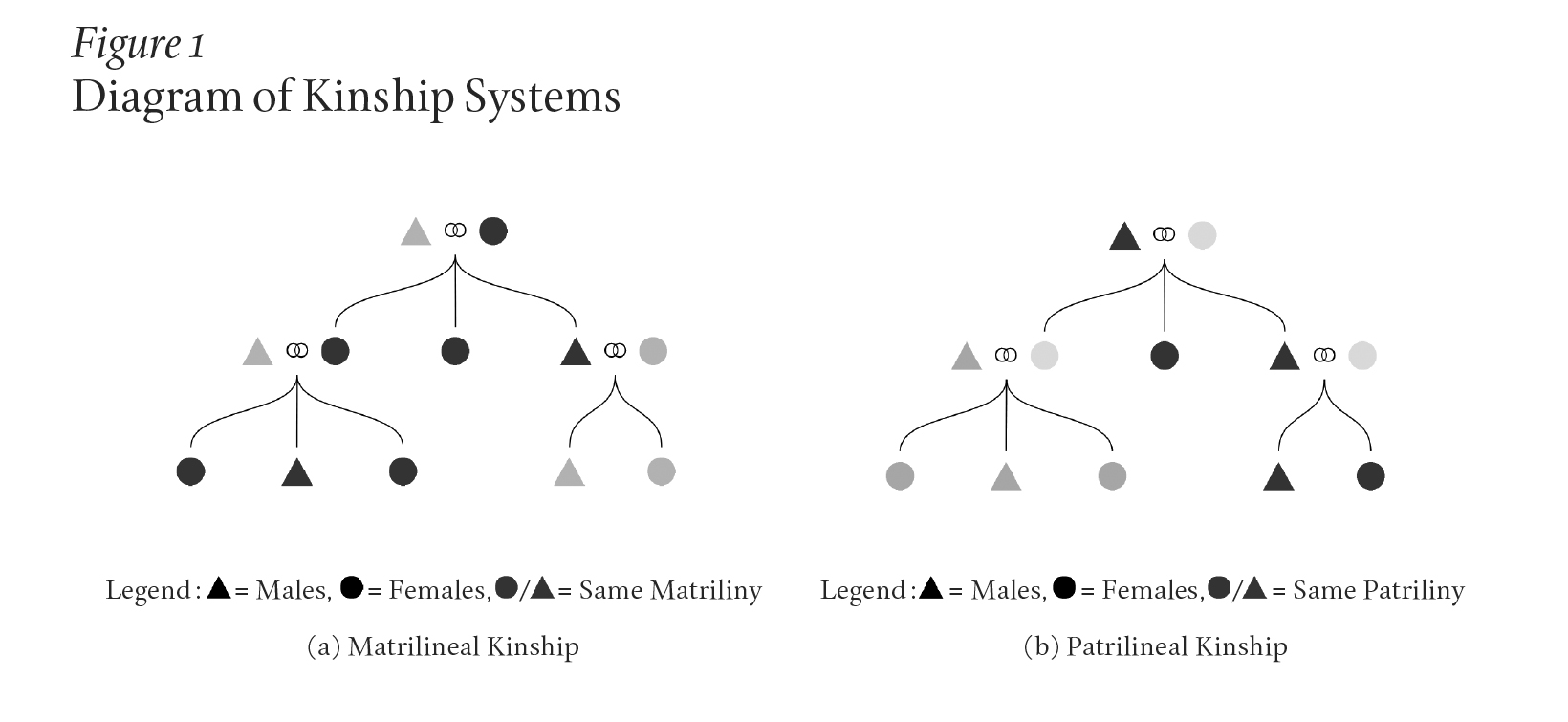Gender-neutral economics can no longer be the default – CEPR

Report on Gender Inequality in Economic Policy and its Implications for Sustainable Development Goals
Introduction: The Gender Gap in Economics and its Detriment to Global Goals
A significant gender imbalance persists in the field of economics, particularly in senior positions. This lack of representation is a critical barrier to achieving Sustainable Development Goal 5 (Gender Equality). More fundamentally, the discipline’s inherent assumption of gender neutrality in its models and analyses leads to policies that perpetuate and deepen inequalities. When economic frameworks are designed predominantly by men, they fail to account for the distinct economic realities of women, thereby undermining progress across multiple SDGs. This report analyses how gender-blind economic policies create inequitable outcomes and hinder the achievement of the 2030 Agenda for Sustainable Development.
Economic Policy Failures and SDG Implications
Seemingly neutral economic policies often have profoundly gendered impacts, creating significant setbacks for several Sustainable Development Goals. The failure to apply a gender lens to economic analysis results in policies that are not only ineffective but actively harmful to women’s economic empowerment and well-being.
Trade Policy and its Impact on SDG 1, SDG 5, and SDG 8
Traditional trade analysis frequently ignores the gendered effects of policies like tariffs, directly impacting global development targets.
- Impact on Employment (SDG 8: Decent Work and Economic Growth): Tariffs on goods from labour-intensive export sectors, such as textiles and electronics, disproportionately affect women, who form the majority of the workforce in these industries in regions like China and Southeast Asia. Job losses resulting from reduced demand push women in precarious, low-wage positions further into poverty, contradicting Target 8.5 for full and productive employment.
- Impact on Consumers (SDG 1: No Poverty & SDG 10: Reduced Inequalities): Higher prices on imported goods place a heavier burden on women, who are overrepresented among low-income consumers and single heads of households. This exacerbates poverty and inequality, working against the core principles of SDG 1 and SDG 10.
Fiscal and Monetary Policy’s Disproportionate Burden on Women
Macroeconomic tools, when implemented without gender analysis, undermine social and economic stability for women, affecting SDG 5 and SDG 10.
- Austerity Measures: Cuts to public services like healthcare, education, and social care disproportionately harm women, who are the primary users and providers of these services. This directly contravenes the spirit of SDG 5 and undermines the social safety nets necessary for gender equality.
- Monetary Policy: Actions such as raising interest rates to control inflation can slow job growth in service sectors where women’s employment is concentrated, creating setbacks for women’s economic participation (SDG 8).
- Pension Systems: Many pension schemes are structured around uninterrupted, full-time employment, penalising women for caregiving breaks and part-time work. This systemic bias contributes to higher rates of poverty among elderly women, undermining SDG 1 and SDG 5.
Labour Markets, Climate Finance, and Access to Capital
Systemic biases in modern economic structures continue to erect barriers for women, impeding progress on multiple fronts.
- Labour Markets (SDG 8): The “gig economy” often fails to account for gendered barriers like unequal access to digital infrastructure and algorithmic biases that penalise caregiving responsibilities. Furthermore, research on labour mobility and migration often overlooks the fact that women are less mobile and face unique challenges during forced displacement.
- Access to Finance (SDG 5): Despite evidence of their creditworthiness, women-led firms face discrimination in credit allocation. This capital misallocation is a direct barrier to women’s economic empowerment, as outlined in SDG 5, Target 5.a.
- Climate Finance (SDG 13: Climate Action): Climate policies like carbon pricing can place a greater burden on low-income households, where women often manage budgets and lack affordable energy alternatives. Climate finance initiatives frequently overlook these gendered vulnerabilities, weakening the effectiveness and equity of climate action.
Structural Barriers and the Path Forward: Aligning Economics with the SDGs
The Need for Gender-Disaggregated Data and Analysis
The persistent “male default” in economic research, which ignores unpaid labour, care responsibilities, and the lived experiences of women, is a fundamental flaw. Achieving the SDGs requires a paradigm shift.
- Data for Development (SDG 17: Partnerships for the Goals): In line with Target 17.18, there is an urgent need for the systematic collection and use of sex-disaggregated data in all economic modelling and policy formulation. Without it, economic analysis remains incomplete and policy outcomes will continue to be inequitable.
- Valuing Unpaid Work (SDG 5: Gender Equality): Economic models must begin to recognize and value unpaid care and domestic work, as called for in Target 5.4. This is essential for creating policies that support women’s full economic participation.
Amplifying Women’s Voices in Economics
Initiatives like the International Economic Association’s Women in Leadership in Economics (IEA-WE) are crucial for promoting research that reflects women’s realities and for dismantling structural barriers. Women economists are conducting groundbreaking research on topics ignored by mainstream models, from the impact of sovereign debt on elderly women to the effects of climate change on finance. However, they face institutional constraints, intersectional bias, and a higher burden of proof to influence public opinion.
Supporting and promoting the work of women economists, particularly those from developing countries and women of colour, is essential for reshaping the global economic narrative to be more inclusive and effective. This directly supports SDG 5, Target 5.5, which calls for women’s full participation and equal opportunities for leadership at all levels of decision-making.
Conclusion: Integrating Gender as a Core Economic Variable
Gender cannot be treated as a footnote in economic analysis; it must be a default variable. The failure to integrate a gender perspective into economic policy is not just a disservice to women—it is a failure of the discipline itself, leading to flawed diagnoses and ineffective solutions. To achieve the Sustainable Development Goals, particularly those related to gender equality, poverty reduction, decent work, and reduced inequalities, economic models and the policy-making rooms they inform must reflect the full spectrum of economic life. Only by addressing the gender gap within economics and its methodologies can we formulate policies that are truly equitable and sustainable for all.
1. Which SDGs are addressed or connected to the issues highlighted in the article?
- SDG 1: No Poverty – The article discusses how economic policies like tariffs and austerity measures disproportionately affect low-income women, single mothers, and the elderly, pushing them further into economic vulnerability.
- SDG 5: Gender Equality – This is the central theme of the article, which details the gender gap in the economics profession and how gender-blind economic policies perpetuate and deepen inequality for women.
- SDG 8: Decent Work and Economic Growth – The article addresses issues of female labour force participation, precarious work in global supply chains, the gendered impact of monetary policy on employment, and unequal access to social protections.
- SDG 10: Reduced Inequalities – The article’s core argument is that seemingly neutral economic models and policies reproduce and deepen inequality by ignoring the specific realities and vulnerabilities of women, including women of colour and those from developing countries.
- SDG 13: Climate Action – The article connects economic policy to climate issues by pointing out that climate finance often overlooks gendered vulnerabilities and that policies like carbon pricing can disproportionately burden women in low-income households.
- SDG 17: Partnerships for the Goals – The article highlights the need for better data and analysis by calling for sex-disaggregated data and mentions the work of the International Economic Association’s Women in Leadership in Economics (IEA-WE) initiative, which fosters global collaboration to amplify women’s voices in economics.
2. What specific targets under those SDGs can be identified based on the article’s content?
-
SDG 1: No Poverty
- Target 1.3: Implement nationally appropriate social protection systems and measures for all. The article critiques austerity measures that lead to “cuts in healthcare, education, and social services” and pension schemes that penalize women, thereby undermining social protection systems.
- Target 1.4: Ensure that all men and women, in particular the poor and the vulnerable, have equal rights to economic resources. The article highlights how tariffs on consumer goods and carbon pricing hit “low-income consumers” and “single mother[s]” harder, limiting their access to economic resources.
-
SDG 5: Gender Equality
- Target 5.1: End all forms of discrimination against all women and girls everywhere. The article points to discrimination in “credit allocation” for women-led firms and “algorithmic bias” in the gig economy.
- Target 5.4: Recognize and value unpaid care and domestic work. The article explicitly criticizes economic research for being “blind to unpaid labour [and] caregiving responsibilities,” which are disproportionately borne by women.
- Target 5.5: Ensure women’s full and effective participation and equal opportunities for leadership in economic life. The entire article argues for “more women in economics,” especially in leadership roles, to shape policy, referencing the “gender gap in the field… especially as we move up the ranks.”
- Target 5.a: Undertake reforms to give women equal rights to economic resources, including access to financial services. The article notes that women-led firms “face discrimination in credit allocation,” directly addressing this target.
- Target 5.c: Adopt and strengthen sound policies and enforceable legislation for the promotion of gender equality. The article’s central thesis is a call to reform economic policymaking to make it gender-responsive, arguing that current policies “reproduce inequality.”
-
SDG 8: Decent Work and Economic Growth
- Target 8.5: Achieve full and productive employment and decent work for all women and men. The article discusses challenges to “female labour force participation rates” and notes that women are often in “precarious, low-wage positions” in sectors like textiles and electronics assembly.
- Target 8.8: Protect labour rights and promote safe and secure working environments for all workers, including those in precarious employment. The article mentions women in global supply chains who lose jobs and access to “health care, childcare, and social protections,” as well as the “gendered barriers” in platform-based “gig” economies.
-
SDG 10: Reduced Inequalities
- Target 10.2: Empower and promote the social, economic and political inclusion of all, irrespective of sex. The article argues that the exclusion of women’s realities from economic models leads to their economic disempowerment and calls for their inclusion.
- Target 10.3: Ensure equal opportunity and reduce inequalities of outcome, including by eliminating discriminatory policies. The article directly critiques economic policies (trade, fiscal, monetary) that appear “technocratic or objective” but “reproduce inequality” and “deepen inequality.”
- Target 10.4: Adopt policies, especially fiscal, wage and social protection policies, and progressively achieve greater equality. The article provides specific examples of how fiscal policy (austerity), monetary policy (interest rates), and social protection (pensions) create unequal outcomes for women.
-
SDG 13: Climate Action
- Target 13.b: Promote mechanisms for raising capacity for effective climate change-related planning and management… including focusing on women. The article supports this by stating that “Climate finance often overlooks gendered vulnerability” and that policies like “Carbon pricing” can burden women, implying a need for gender-focused climate planning.
-
SDG 17: Partnerships for the Goals
- Target 17.18: Increase significantly the availability of high-quality, timely and reliable data disaggregated by income, gender, age, race, ethnicity, migratory status, disability, geographic location and other characteristics relevant in national contexts. The article makes a direct call for “sex-disaggregated data and gender analysis” to be incorporated into economic models and policy decisions.
3. Are there any indicators mentioned or implied in the article that can be used to measure progress towards the identified targets?
-
SDG 5: Gender Equality
- Proportion of women in leadership positions: Implied by the statement about the “gender gap in the field… especially as we move up the ranks” in economics.
- Gender gap in access to finance: Directly mentioned as “discrimination in credit allocation” for women-led firms.
- Gender pension gap: Explicitly mentioned as a measurable outcome of biased pension schemes.
- Time spent on unpaid care and domestic work: Implied by the critique that economics is “blind to unpaid labour [and] caregiving responsibilities.”
-
SDG 8: Decent Work and Economic Growth
- Female labour force participation rate: Explicitly mentioned as a key area of economic research.
- Proportion of women in precarious employment: Implied by the discussion of women in low-wage jobs in global supply chains and the insecure nature of the “gig” economy.
-
SDG 10: Reduced Inequalities
- Analysis of fiscal and monetary policies for gendered impacts: Implied by the detailed critique of how austerity, interest rates, and tariffs affect women differently.
-
SDG 13: Climate Action
- Proportion of climate finance that is gender-responsive: Implied by the statement that “Climate finance often overlooks gendered vulnerability.”
-
SDG 17: Partnerships for the Goals
- Availability of sex-disaggregated data: Explicitly mentioned as a critical need for economic analysis and policymaking.
4. Table of SDGs, Targets, and Indicators
| SDGs | Targets | Indicators (Mentioned or Implied in the Article) |
|---|---|---|
| SDG 1: No Poverty | 1.3 Implement social protection systems. 1.4 Ensure equal rights to economic resources. |
Coverage of social protection systems by sex. Impact of consumer prices on low-income households, by gender of head of household. |
| SDG 5: Gender Equality | 5.1 End discrimination against women. 5.4 Recognize and value unpaid care work. 5.5 Ensure women’s full participation and leadership in economic life. 5.a Give women equal rights to economic resources/finance. 5.c Adopt sound policies for gender equality. |
Proportion of women in leadership positions in economics. Data on time spent on unpaid care and domestic work. Gender gap in access to finance/credit. Gender pension gap. |
| SDG 8: Decent Work and Economic Growth | 8.5 Achieve full employment and decent work for all. 8.8 Protect labour rights and promote secure working environments. |
Female labour force participation rate. Proportion of women in precarious employment (e.g., in supply chains, gig economy). |
| SDG 10: Reduced Inequalities | 10.2 Promote inclusion of all. 10.3 Ensure equal opportunity and reduce inequalities of outcome. 10.4 Adopt policies to achieve greater equality. |
Analysis of fiscal, monetary, and trade policies for gendered impacts. Inclusion of intersectional analysis (gender, race, origin) in policy evaluation. |
| SDG 13: Climate Action | 13.b Promote mechanisms for climate planning, focusing on women. | Proportion of climate finance that is gender-responsive. Analysis of the gendered impact of carbon pricing. |
| SDG 17: Partnerships for the Goals | 17.18 Increase availability of high-quality, timely, and reliable disaggregated data. | Availability and use of sex-disaggregated data in national economic models and policy analysis. |
Source: cepr.org

What is Your Reaction?
 Like
0
Like
0
 Dislike
0
Dislike
0
 Love
0
Love
0
 Funny
0
Funny
0
 Angry
0
Angry
0
 Sad
0
Sad
0
 Wow
0
Wow
0



























;Resize=805#)


















































